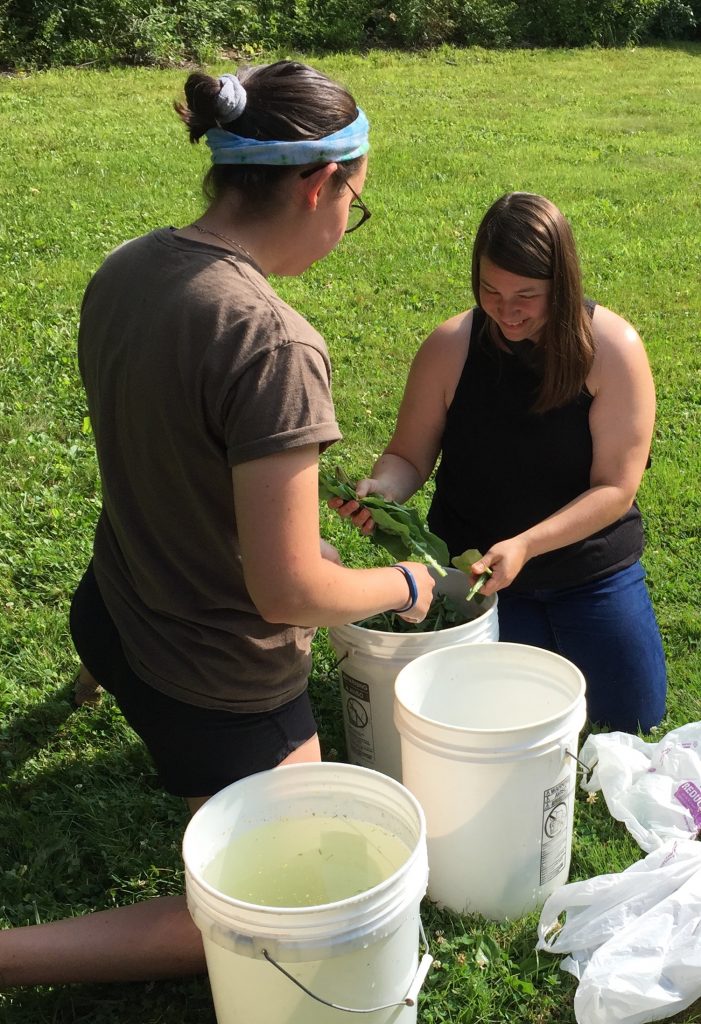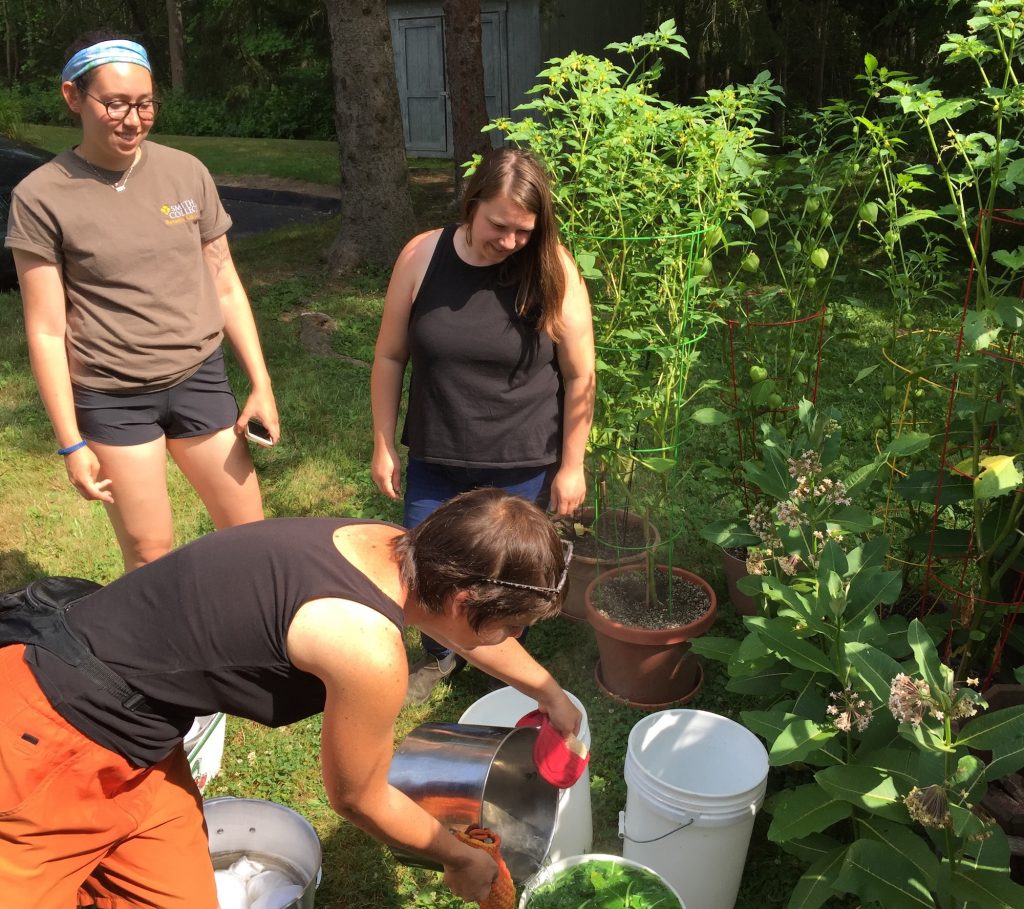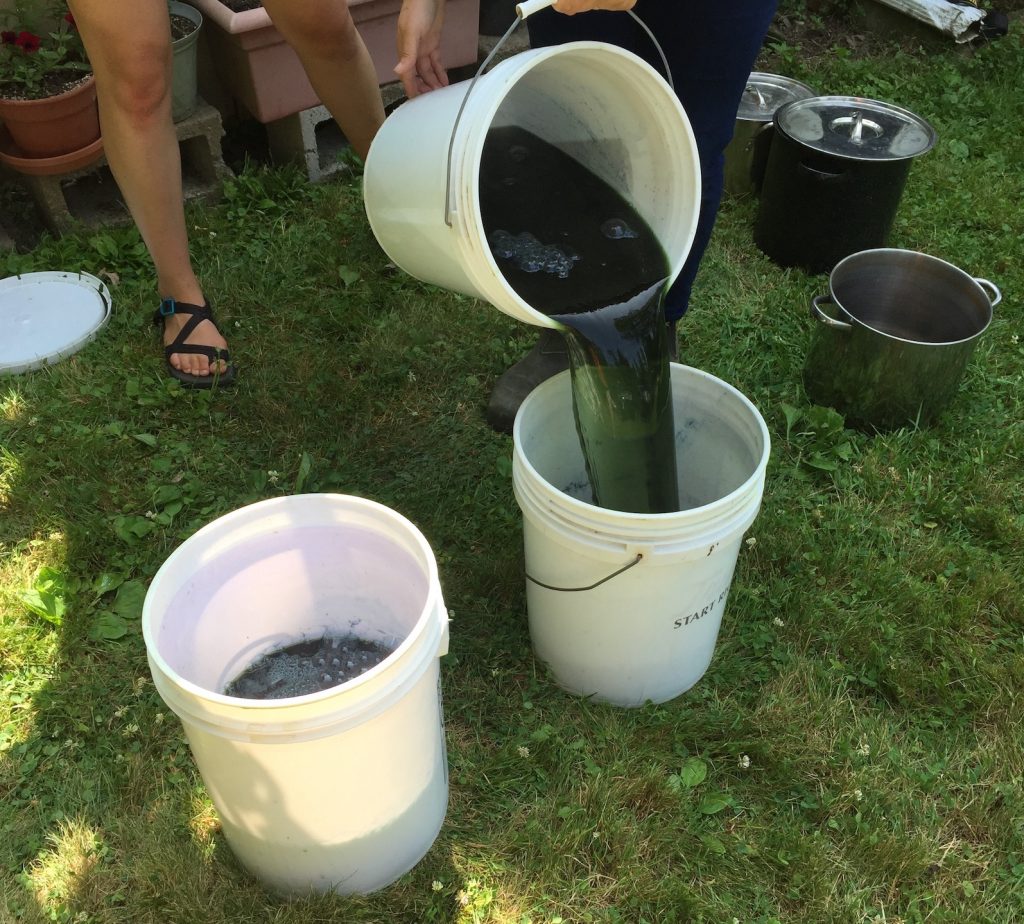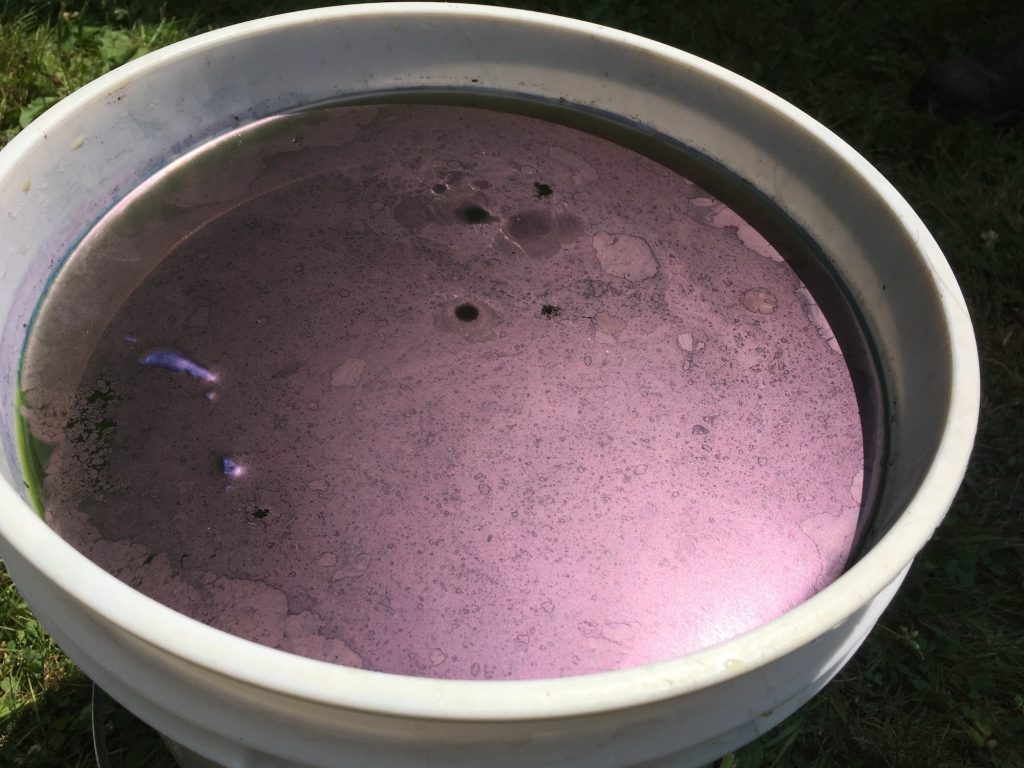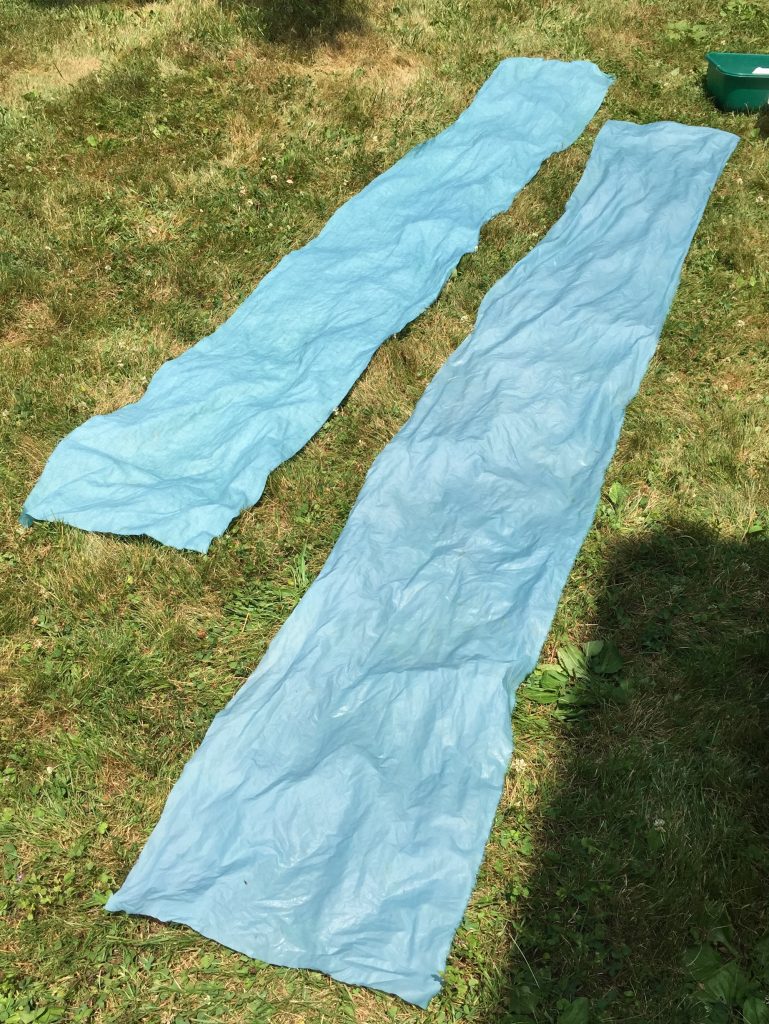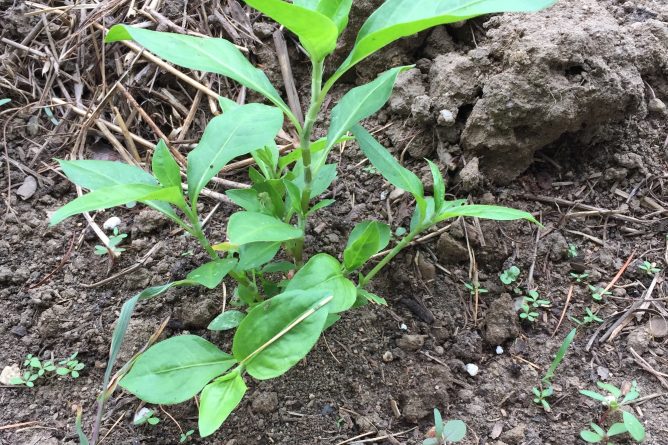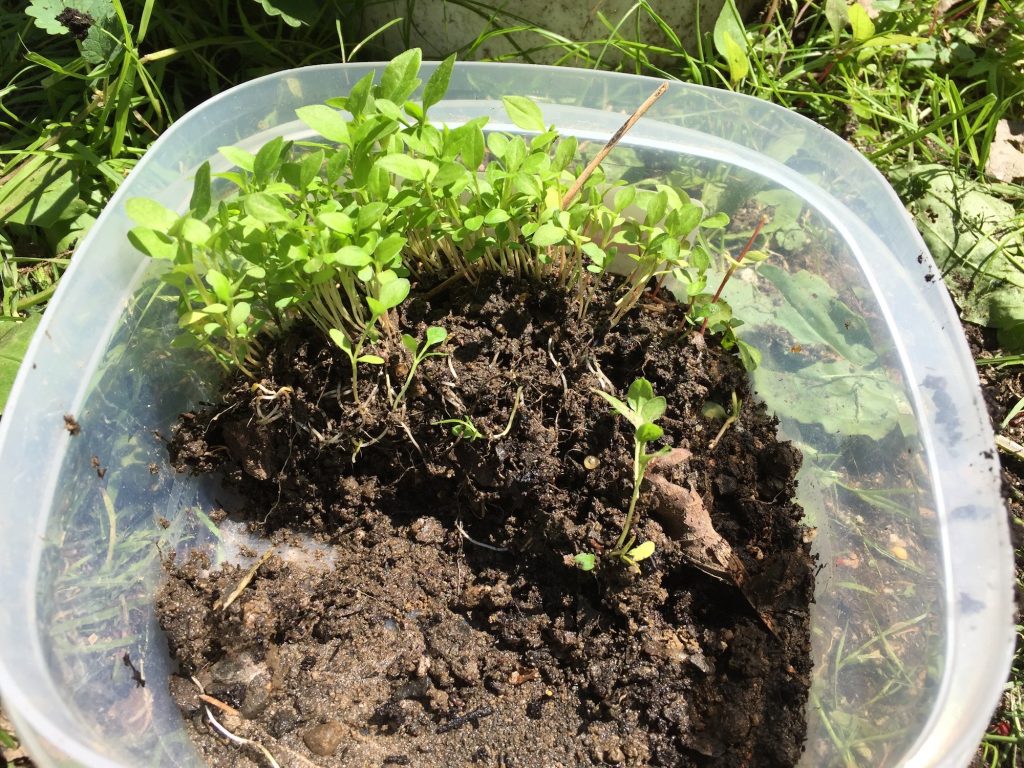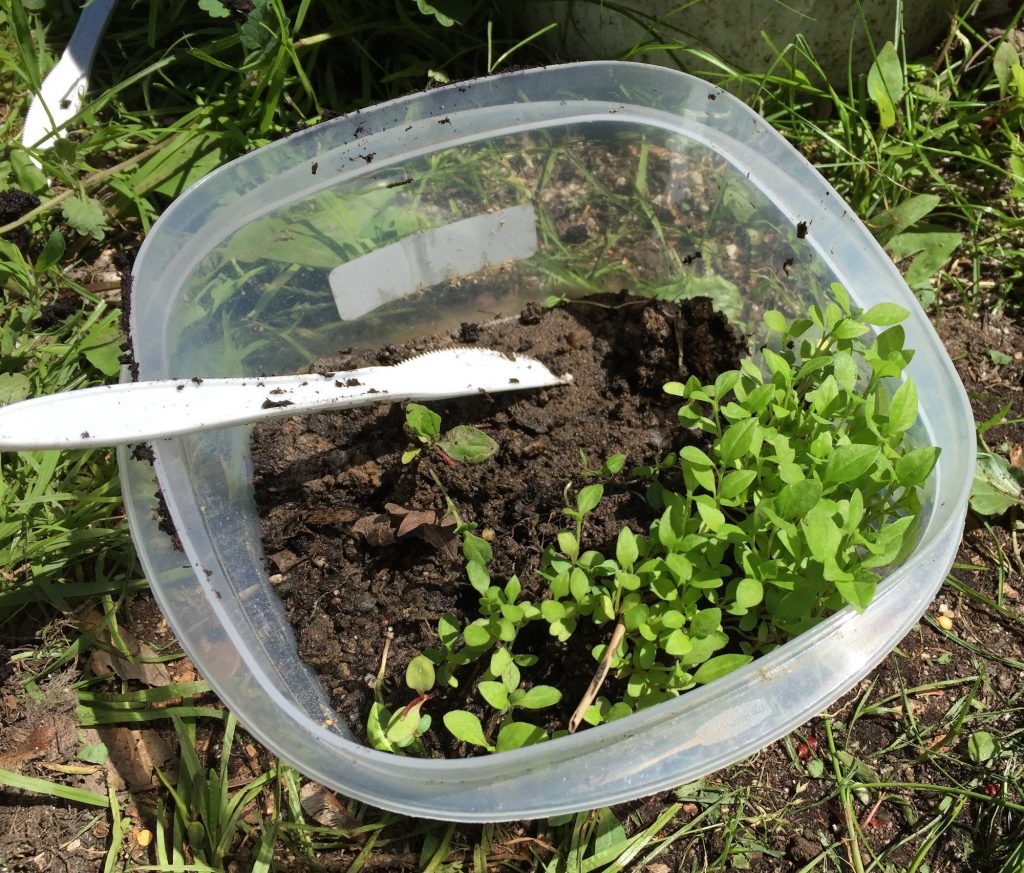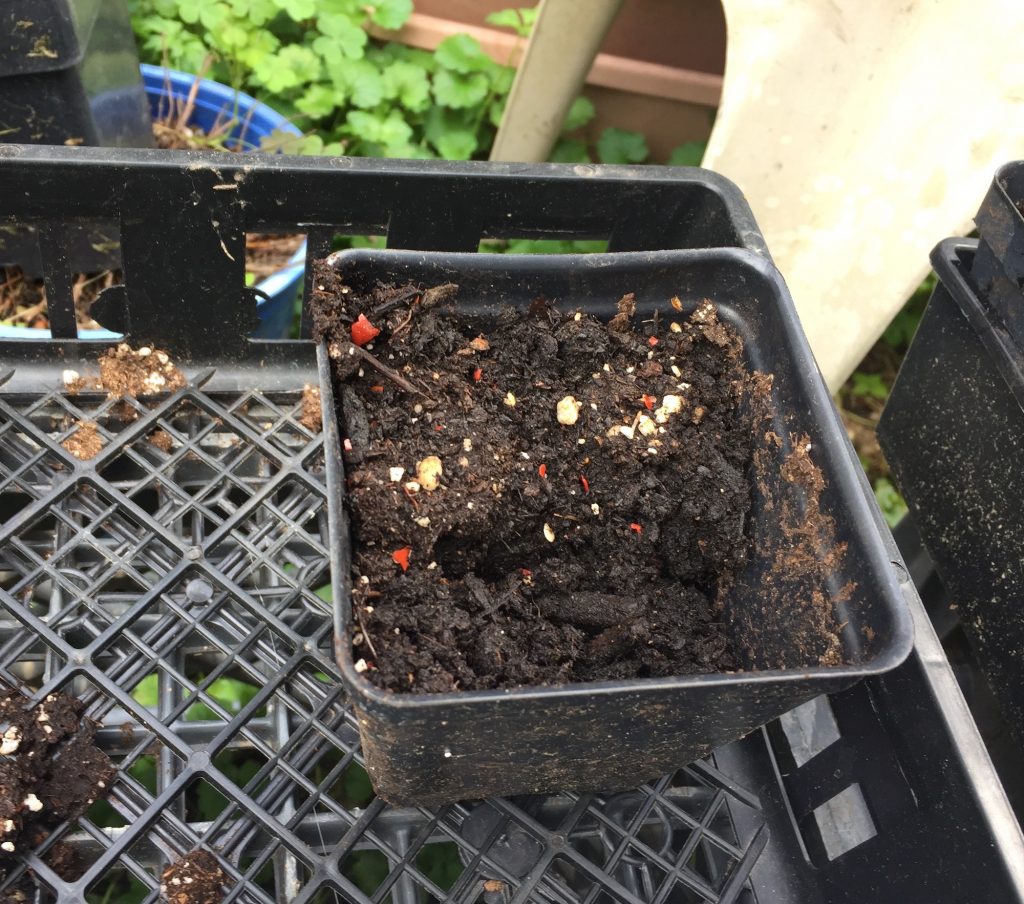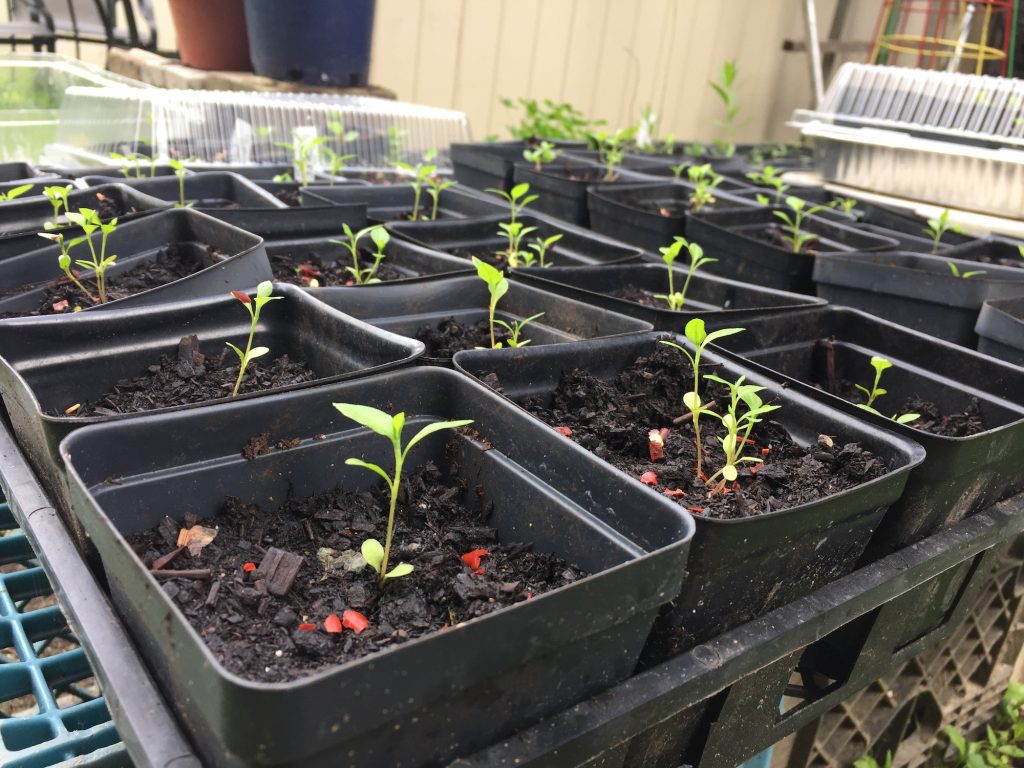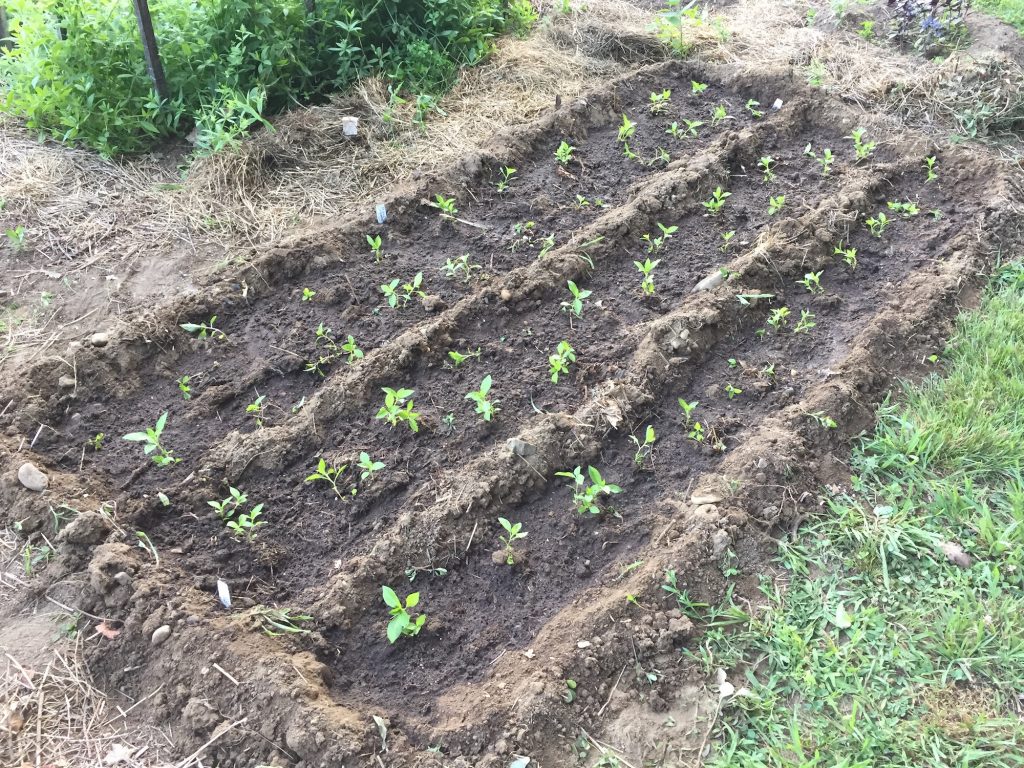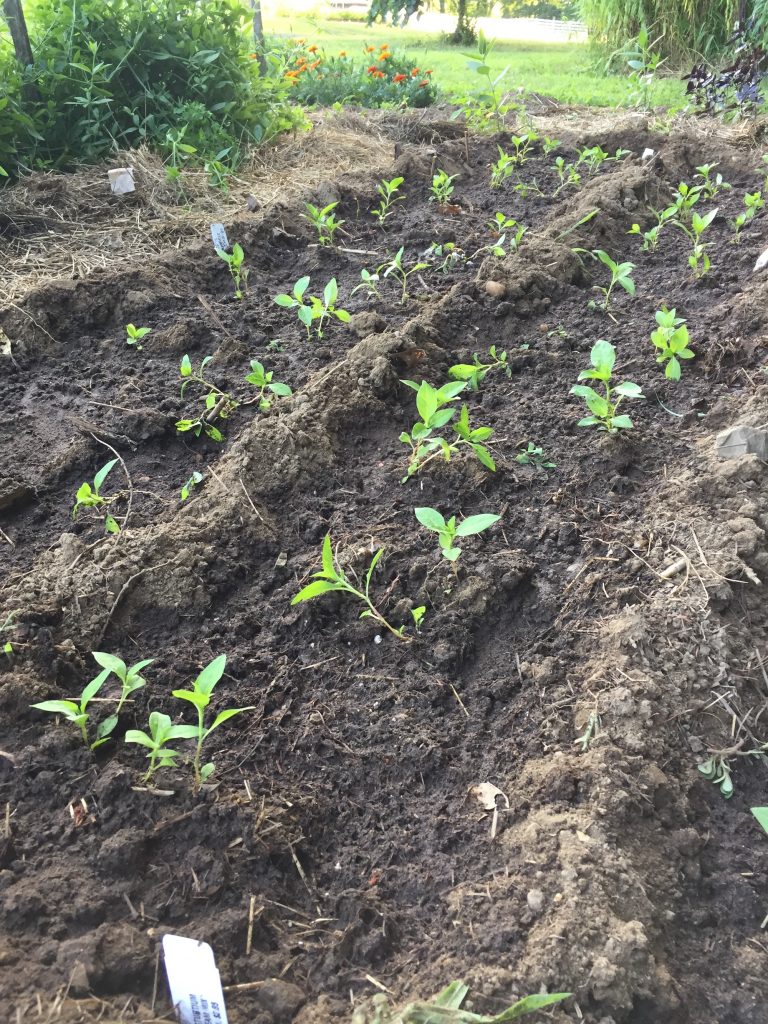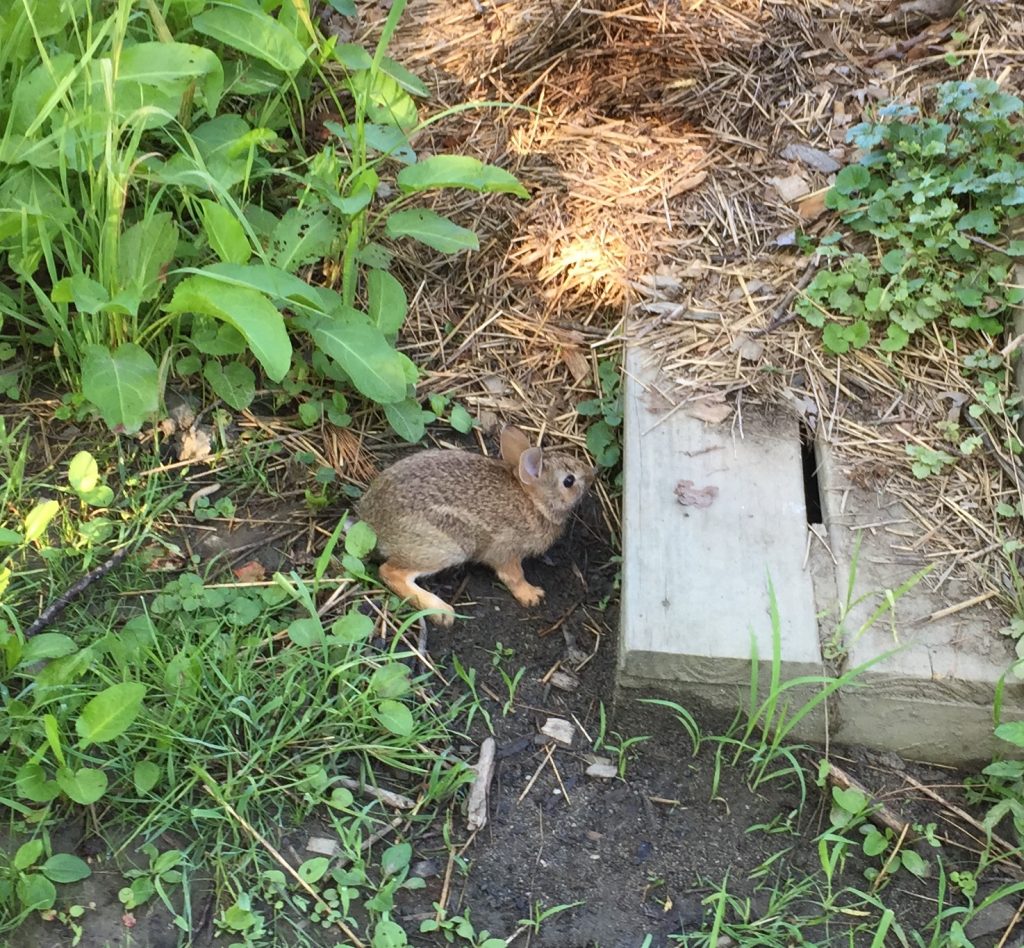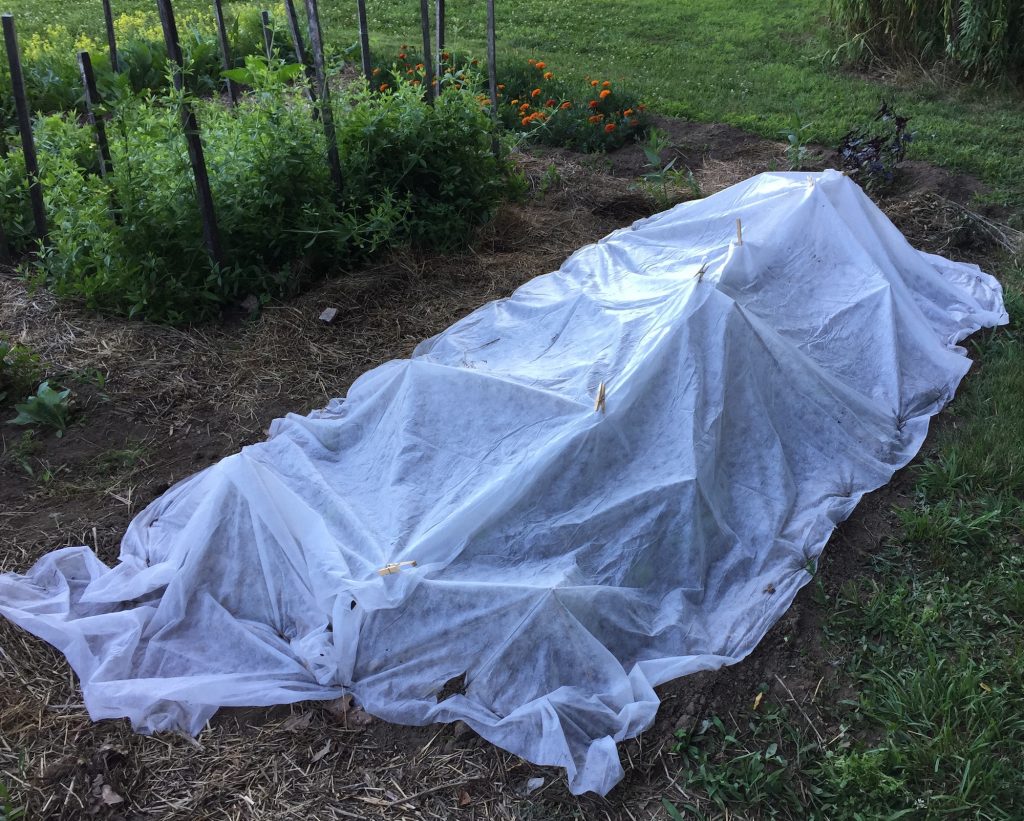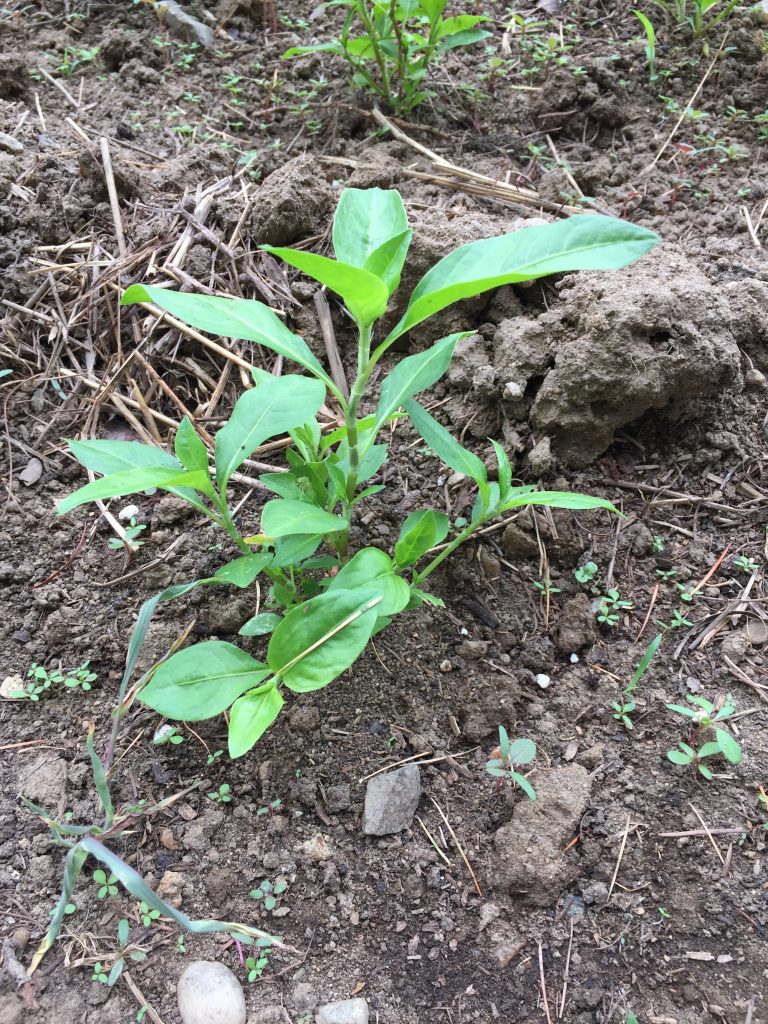This summer I am working on a very exciting project in conjunction with the Botanic Garden of Smith College. They are putting together an exhibition about dye plants called The Art and Science of Dyeing, and I am dyeing the cloth that will be featured in the exhibit! It is an incredible honor and I am thrilled to be part of it. Woad is one of the plants we are featuring, and so my investment in my woad plants is especially high this year. (12/31/2023 Thanks to the Internet Archive’s Wayback Machine for the link to the old Botanic Garden website!)
Last month I described the odd behavior of my woad, which bolted (sent up a flower stalk) and went to seed in its first year. Normally, woad is a biennial. The first year plant grows a basal rosette, which is a clump of leaves that radiate from the center and stay pretty low to the ground.
By July, the plants were getting big, despite their flowers. Small green seeds were beginning to form. I figured it was now or never to use them. Usually when woad goes to seed, the leaves are small and clasp closely to the stalks. In contrast, these leaves were still large and wavy, and seemed plump, lush, and happy. So, I felt optimistic.
On July 10th, the day I ran the woad vat, Sarah Loomis, Manager of Education, and a student intern named Hannah came to help out and do the photo-documentation for the exhibit.
We harvested the woad together at Bramble Hill Farm around 8 am, since it was going to be a hot day. We cut about four and a half pounds of leaves. I estimate it was half from bolted plants and half from plants that hadn’t bolted, but I didn’t separate them.
Here they are washing and shredding the leaves while I ran around heating up pots of water:
Once the water boiled, I did my usual routine of pouring just-boiled water into the five gallon bucket full of leaves. I fill it right up to the rim with just-boiled water, and press on the lid so that there is no additional air at the top of the bucket.
My typical method is to let the leaves soak for 45 minutes with the lid pressed on tightly. Recently I have read that for the maximum color when extracting indigo, it’s better to heat briefly at a high temperature, then cool the bath quickly. I haven’t tried this yet.
When you’re waiting around for 45 minutes you find something else to do. This time of year I commonly string up marigolds to dry, so that’s what we did. Sammycat watched over everything and was her usual charming and attentive self.
After the leaves extracted, I strained them, then added ammonia to get the liquid to pH 9. Then we aerated the vat. Normally I have to do this process by myself, which is kind of tiring. I pour the liquid back and forth between three buckets for ten minutes or so. It was nice to have help!
I was very excited to see a deep blue color emerge as we were aerating. I have read that second year leaves will give less color than first year leaves, so I was expecting a weaker vat than usual. At first I was optimistic that it would be a strong vat.
For a reducing agent I used RIT Color remover, which contains sodium hydrosulfate. We let the vat reduce for 45 minutes.
It looked pretty good, and the Smith folks were on the clock. I dipped in a length of linen cloth for a very short dip, then a length of silk, so they could see the color change. Linen is on the left, and silk on the right in the image below:
Things looked very typical and blue at first. Yay.
I let the cloth oxidize for a while. But since I usually put in my fiber for much longer dips, I decided to re-dip both the linen and silk several times. Some people recommend letting the fiber oxidize for the same length of time as the dip. Normally I dip a skein or piece of cloth only once per woad vat, and I dip for at least ten minutes. I feel that the color needs a long time to oxidize, and I let the fiber air-dry completely before rinsing and neutralizing. I normally wait until I run another vat to dip a piece of fiber again.
Nevertheless, I re-dipped several times in the same day this time around. Here were the lengths of cloth at 12:09. Silk is still on the right.
And again at 2:29. Fibers are always darker when wet, which is part of what’s going on in these photos. Silk is on the right but it’s wet.
After several dip-and-air cycles, I did not seem to be gaining any additional depth of color. My usual way to test whether a vat is really done is to throw in some wool. Wool will slurp up color like nobody’s business. If the vat is really dead, then the wool will let me know. If not, then I know it’s something quirky with the cellulose.
Behold the totally feeble color on wool skeins.
The weird mustard-yellow skeins were previously dyed with marigolds. The grassier greens were previously dyed with bronze fennel. For some reason marigolds and dahlias often act funky with woad. I will find out more about that some day.
So, I figured the vat was done, and I let the cellulose fibers dry out completely. The next day, I rinsed them with a vinegar solution to neutralize the pH, then a mild laundry detergent rinse, then several rinses in plain water. After the vinegar rinse, the light blue silk turned gray. What?!
With woad I do not tend to lose a lot of color when rinsing, so this color shift was a surprise to me. After all the rinses, I hung up the cloth to dry and you can see the gray for yourself (silk on the right):
The same week I also ran madder and weld dye baths, which I will write about later. But you can see the pale silk on the line with the other comparatively more vibrant colors (it’s second from the left):
Yikes! I will over-dye the silk later this summer. The dried linen is light, but typical of a woady blue. I feel it is representative of what woad can do on cellulose fibers. Color is almost always lighter on cellulose fibers, even though woad can make very rich, dark blues on wool. The pale color may be due to the weaker vat, due in turn to the reduced color available in the bolted plants. But the dried silk is so pale and gray that I can’t even understand what is going on.
I have been wondering how to think about this gray-silk-bolted-woad thing. It’s a multi-faceted problem. It has made me wonder what the difference is between a “lesson” and an “experience”. Did I learn a lesson about bolted woad? Learning a lesson has a sort of bossy and authoritarian insinuation. “I hope you learned your lesson.” “Let that teach you a lesson.” On a more positive note, it implies a principle or rule that one can refer to in the future to guide one’s actions. If I did learn a lesson, what was it? Don’t bother with bolted woad, at least not on cellulose fiber?
If it was just an experience, how much weight should I give it? I don’t feel like I can ignore it. “Chalk it up to experience” is a comforting saying, but I like to feel that I’ve learned something from my experiences, even if they aren’t a “lesson” per se. Will bolted woad always give disappointing color? Is there more to know about second year woad? Undoubtedly, yes. Is woad just weird with silk? Did the vinegar solution make the silk unhappy for some reason unrelated to woad?
One thing’s for sure, I always seem to find more questions than answers.


